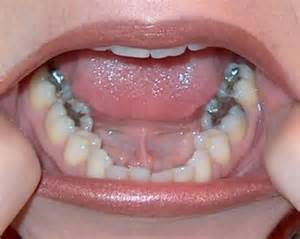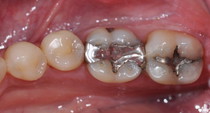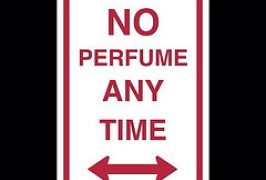A significant part of my MCS recovery involved some major dental work. As I began the detox process, I knew the amount of dental work I would need to have done in the future would be significant. I had eight root canals and six amalgam fillings that would need to be replaced. I also realized that this was a project that was years down the road, as my level of toxicity was so high, there was no way I could tolerate the procedure. The reality for me was almost five years of detoxing, before I was healthy enough to go through all of the dental work without negative effect.
Find a Biological Dentist
The first step was in finding a biological dentist who understood MCS and was willing to work with me. During the initial consultation, the dentist made an assessment of my situation and developed a plan on how we should proceed, based on my health and the amount of work that needed to be done.
During our visit I learned that number of his patients had some form of environmental illness. I also learned that he was more than willing to do whatever was necessary in order for me to have a safe environment. Since the office would have a chance to air out on weekends, I made my appointments for Mondays when possible. At every visit I was the first patient of the day. I did this in order to avoid any potential exposures to other patients who may use fragrance or fragranced products such as dryer sheets or fabric softener. I also brought a change of clothes and a mask with me at every visit, in case someone was in the office who was wearing something that would make me sick. I also brought my own emergency kit with me, which I carry at all times. It contains homeopathics and supplements that I tolerate well and are based on my needs.
The dental work was considerable. Aside from replacing the six amalgams, I had eight root canals removed. During that process, it was discovered that under the root canals, my jawbone was rotting (as evidenced by the sinking of the drill into my jawbone.) So I also had bone grafts done as well. This would explain why I had suffered through years of mouth and jaw pain that other dentists and doctors could not explain.
Work With Your Healthcare Practitioner
It is critically important to work with your healthcare practitioner while having dental work done. Since we are all so unique with our sensitivities and reactions, your practitioner should come up with a health plan based on your needs, to help your body adjust to the trauma of dental work, to support your body during the healing process and to assure that you have little or no negative health effects to the procedure. Because of the detox work I had done previous to my dental procedures and the health plan I followed, I had no negative side effects to any of the work done.
Use Safe Materials
All of the work I had done took place in a dental office with carbocaine injections. I did also require stitches, but they were dissolvable, so I didn’t have to return to have them removed. My dentist commonly used ozonated water to irrigate the area after removing teeth, but I was not comfortable with this, so I brought silver for this purpose. I also had to get a partial. I am an excellent muscle tester, so my dentist gave me a sample of every item he would be using for the partial, so that I could test them at home before the partial was made. He also muscle tested me and without revealing what our choices were for the safest products for me, we came up with the same results. We also went through this same process for all the materials used during the entire dental process, including replacement materials for the amalgams and the bone grafting material.
Follow Safe Amalgam Removal Practices
As a member of IAOMT (International Academy of Oral Medicine and Toxicology), my dentist followed the protocols listed below (steps 3-11)to reduce my chance of mercury exposure as well as that of himself and his assistant.
Steps for Safe Amalgam Removal
1. Find a biological dentist.
2. Work with your healthcare practitioner to develop a protocol to reduce exposure reactions
3. Use of a rubber dam to prevent any amalgam debris from being swallowed or inhaled.
4. Covering the face of the patient with a barrier to prevent spattered amalgam particles and mercury vapor from coming in contact with the skin and eyes.
5. Administration of nasal oxygen.
6. Use of high volume suction in the operating area.
7. Use of a saliva ejector behind the dam to evacuate any mercury vapor that passes through the dam.
8. Rinsing of the dam thoroughly during amalgam removal to remove any stray amalgam particles.
9. Using water on amalgam during removal to cool the amalgam and reduce the amount of vaporization of mercury.
10. Sectioning the amalgam fillings into large chunks for removal in order of reducing the dispersement of amalgam particulate aerosol.
11. Thorough rinsing of the mouth area after removing rubber dam.
All in all I was shocked that I had no negative effects, no infections, and no problems. I believe that waiting until I had significantly reduced my toxic load was the reason for this. I also credit the reason to the large amount of prayer that I requested. Since having all of this dental work completed, I have seen a significant shift in my health. It has brought me to a whole new level of health and healing. After doing this and some other significant work, I can say that I am almost completely healed. I still lead a chemical free and non toxic life, but the difference is I have a life. I rarely react to chemicals anymore, unless they are truly severe, such as the months of wildfires we recently had in the West. But even then my recovery time is incredibly fast. Having all of this dental work done was a significant part of my recovery.








